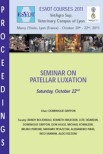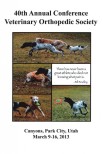OBJECTIVE To describe clinical use of a locking compression plate (LCP) for proximal interphalangeal joint (PIPJ) arthrodesis in horses and compare outcomes for horses that underwent the procedure as treatment for fracture of the middle phalanx (P2) versus other causes.
DESIGN Retrospective case series.
ANIMALS 29 client-owned horses.
PROCEDURES Medical records of 2 veterinary teaching hospitals from 2008 through 2014 were reviewed to identify horses that underwent PIPJ arthrodesis of 1 limb. Signalment, surgical, and outcome-related variables were recorded. Owners were contacted from 1 to 6 years after surgery to determine rehabilitation time, current use of the horse, and overall owner satisfaction with the procedure. Success was determined on the basis of owner satisfaction and outcome for intended use. Variables of interest were compared statistically between horses that underwent surgery for P2 fracture versus other reasons.
RESULTS 14 horses underwent surgery for treatment of P2 fracture, and 15 had surgery because of osteoarthritis, subluxation, or osteochondrosis. Median convalescent time after surgery (with no riding or unrestricted exercise) was 7 months. Four horses were euthanized; of 23 known alive at follow-up, 22 were not lame, and 18 had returned to their intended use (8 and 10 at higher and lower owner-reported levels of work, respectively). Horses undergoing arthrodesis for reasons other than fracture were significantly more likely to return to their previous level of work. Twenty-two of 24 owners contacted indicated satisfaction with the procedure.
CONCLUSIONS AND CLINICAL RELEVANCE Surgical arthrodesis of the PIPJ was successful in most horses of the study population. Various nuances of the system for fracture repair need to be understood prior to its use.









